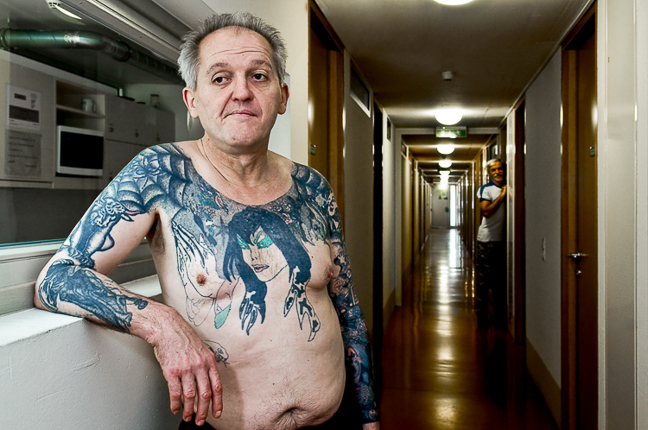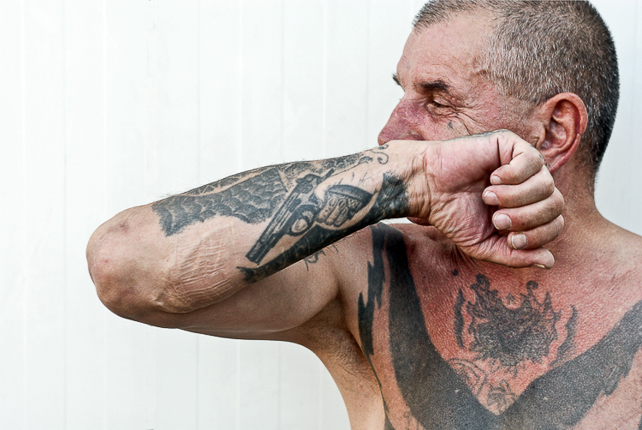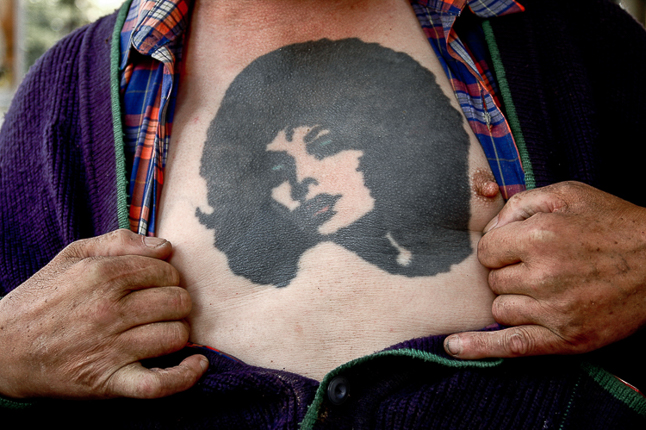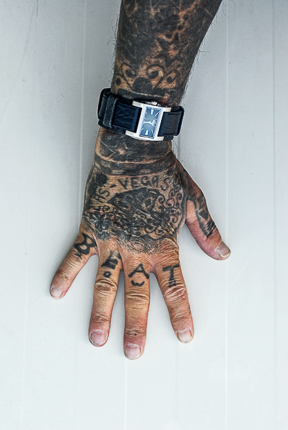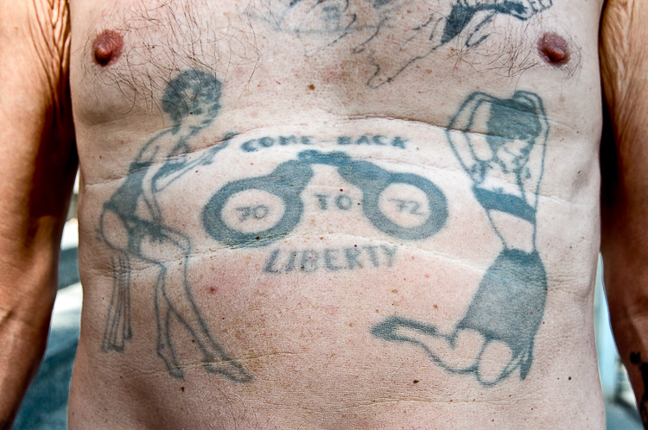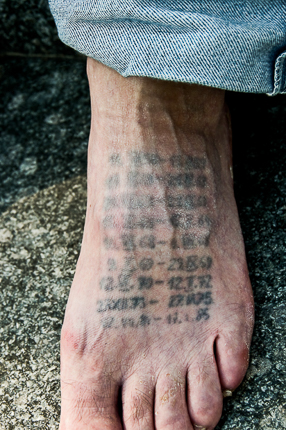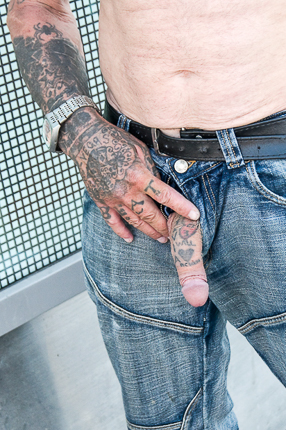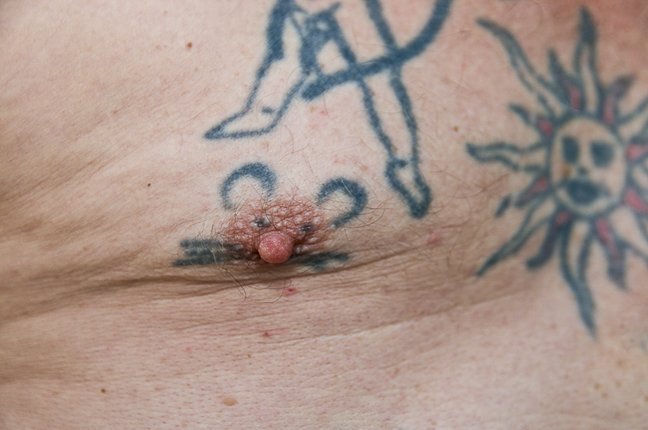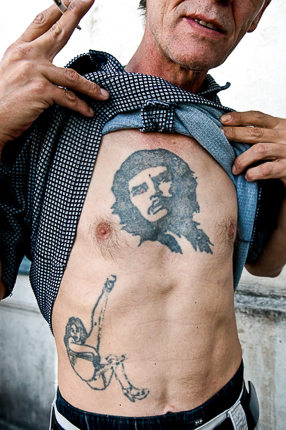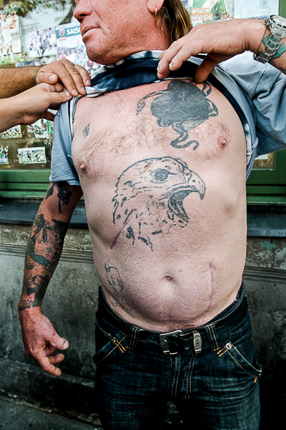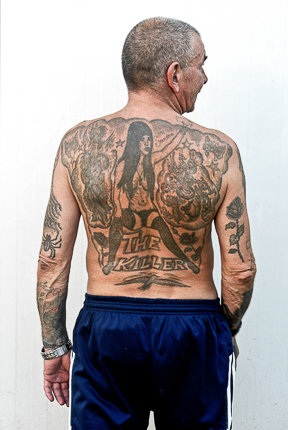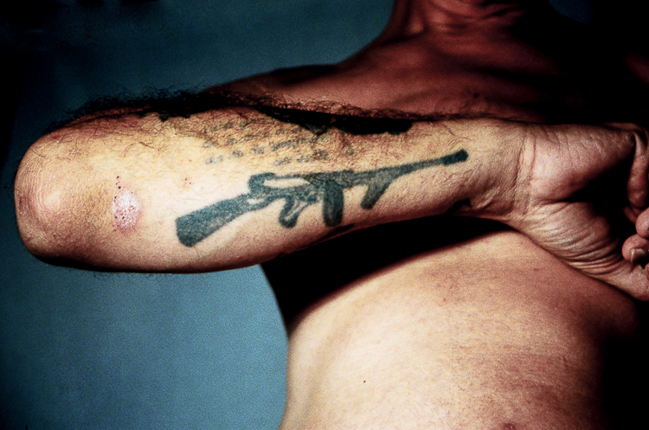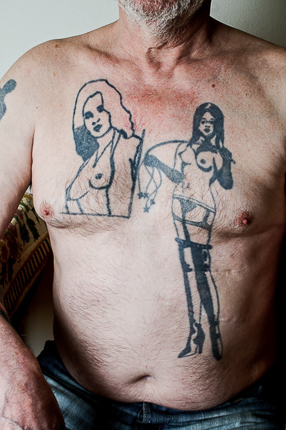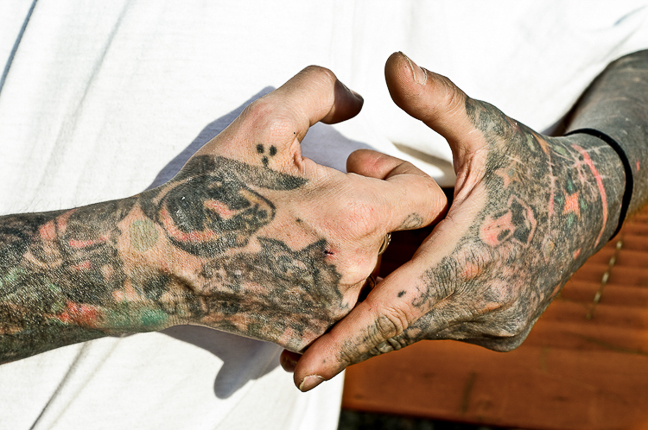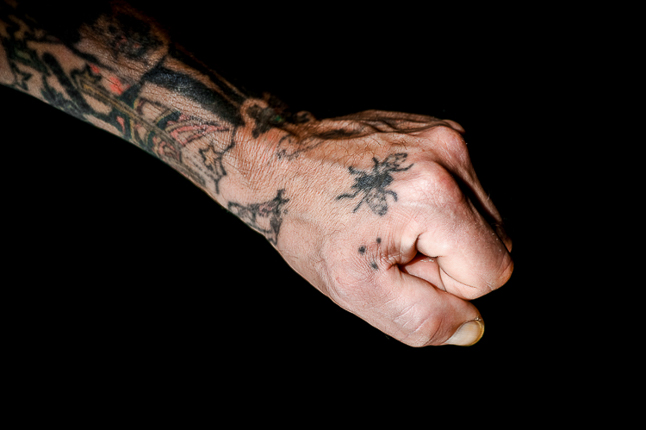In 2003 I met an elderly homeless man whose forearms were covered in tattoos- prison tattoos, he explained to me. This encounter left me curious to find out more about these body ornaments and I started to look for people with prison tattoos in order to take photos of them. Over the last 7 years I have taken photographs of nearly 150 bearers of tattoos, accompanied by numerous conversations with them. The results of the confrontation with this cultural practice have since been collated in the book ‚Inked for life. The world of prison tattoos.’ This book includes different approaches to the subject of prison tattoos – an extensive essay takes a look at the historic and sociological roots of this cultural phenomenon. Furthermore, a large number of photographs and quotes offer insight into the world of prison tattoos. The focus lies in the period from the 1950s to the 1980s, the heyday of the practice of prison tattoos. Back then, getting tattooed in prison was considered to be a sign of belonging to a criminal subculture. The symbols carried secret meanings and revealed biographic details and personal preferences of the bearer. The ban on prison tattoos caused them to be regarded as a visible symbol of an act of rebellion and a sign of freedom on a captivated body.
Published by Fotohof edition, Salzburg, 2011.

